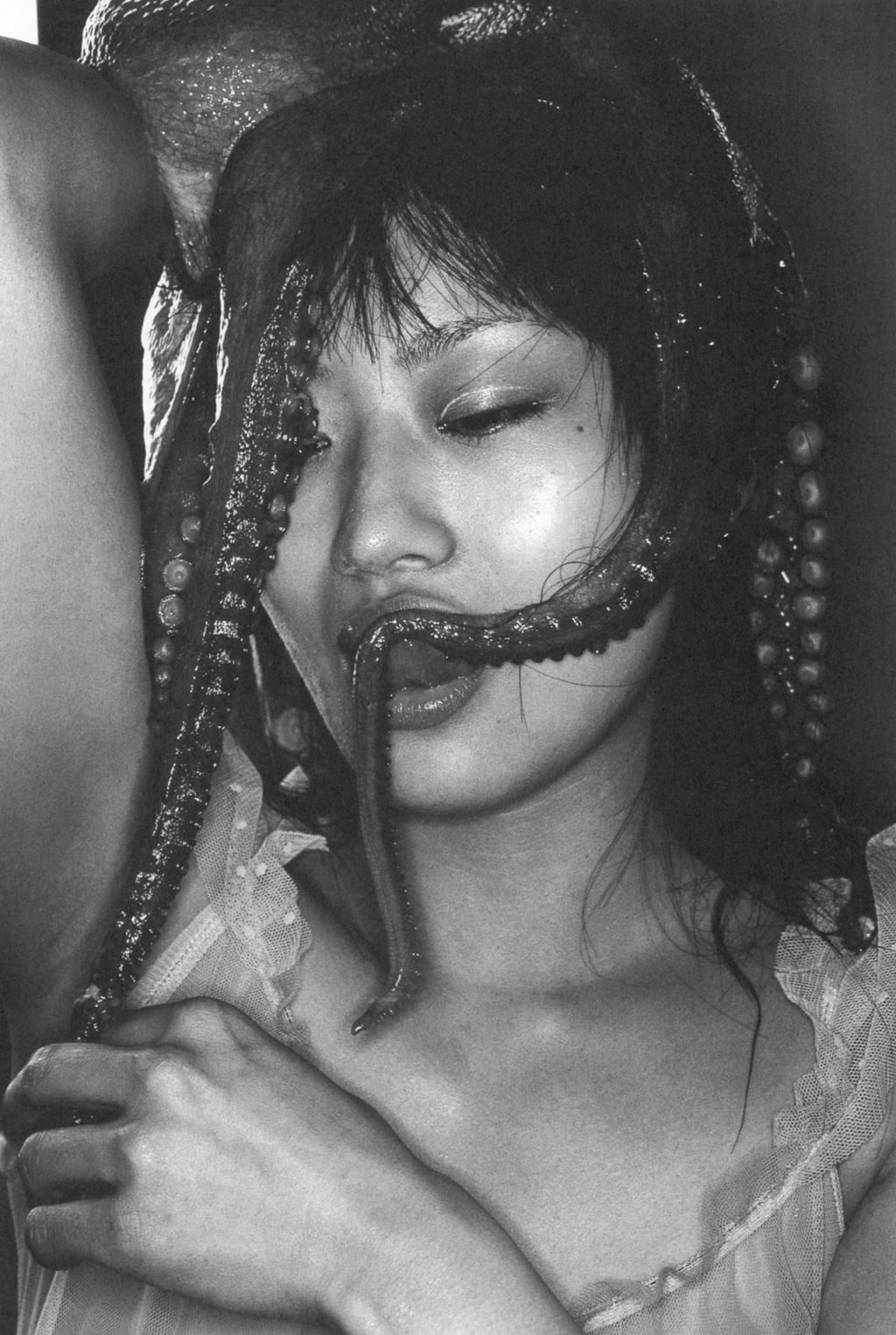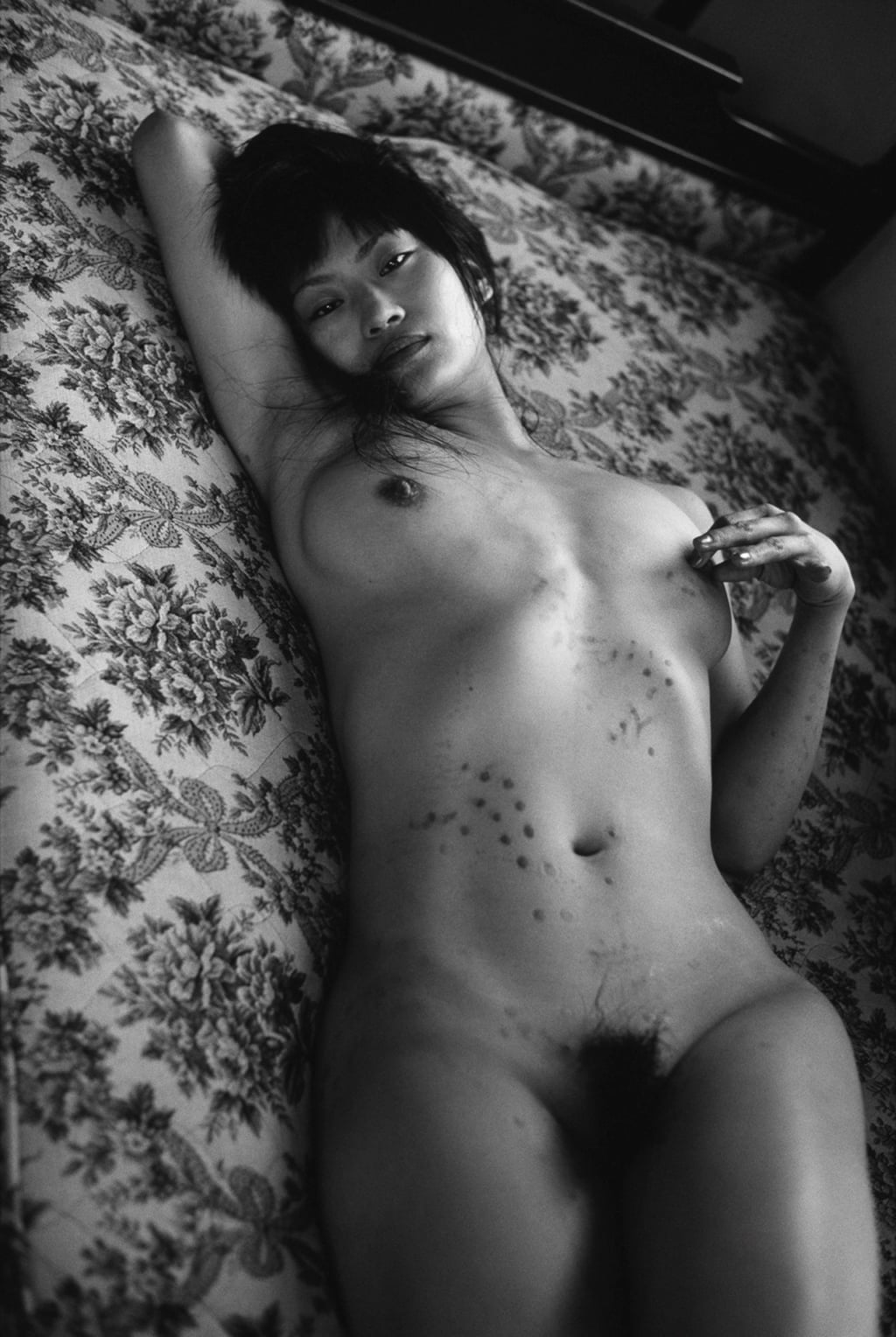The Sensuality Between a Woman and an Octopus: a Modern Take
The series 'Hysteric Ten' by photographer Sawatari Hajime revisits one of the most sulphurous relationships in Japanese art.

© Hajime Sawatari. Courtesy of Michael Hoppen Gallery
A woman, an octopus. This is the cast selected by photographer Hajime Sawatari to appear in his series Hysteric Ten (2004). Although this duo immediately recalls the famous engraving The Dream of the Fisherman’s Wife, created by Katsushika Hokusai in 1814, Hajime Sawatari revisits it here. He develops this motif in a sensual series that contains elements of fantasy, fiction, and taboo.
The artist, born in Tokyo in 1940, began his career while he was still a student at Nihon University’s Department of Photography, College of Art, working with the Nippon Design Center, Inc. as an advertising photographer. His work, always centred on women and young girls, has been featured in the collections housed by some of Japan’s most important museums, including the Tokyo Metropolitan Museum of Photography, the Niigata City Art Museum, and the Kawasaki City Museum.
Soft suckers
Published by Hysteric Glamour as part of a series of 16 works featuring artists including Daido Moriyama, Terry Richardson, Masahisa Fukase, and Cindy Sherman, the series Hysteric Ten is inspired by shunga, literally meaning ‘picture of spring.’ This erotic art movement lasted from the late 17th century until the end of the 19th century, popularised by artists from the ukiyo-e school, and combines softness and sensuality.
Like in Daikichi Amano’s series Human Nature, in Hysteric Ten, the octopi spread out over the undressed model’s head, their suckers wander over her genitals, and their passage over her body leaves behind the marks of an intense, passionate relationship, characterised by a mutual desire that unsettles the viewer, who is caught between a sense of unease and questioning when faced with such surrealist imagery.
As is noted in the text published in 2018, when the series was exhibited by the Michael Hoppen Gallery (NYC), ‘in contemporary Japanese society, octopi have been widely employed to erotic effect. Representations range from those in popular manga and anime, to the use of tentacles by artistic enfant terrible, Makoto Aida, in his most famous work, The Giant Member Fuji vs. King Gidora (1993), to the hentai genre of hard-core pornography’
Another side to Hajime Sawatari’s work is showcased in the book Dark Eros by Sino-Singaporean photographer Jingna Zhang. His work appears alongside that of Kiyo Murakami, Chikashi Kasai, and TRMN. In this book, the photographer presents a sensual series created with model Tessa Kuragi.
Hysteric Ten (2004) by Hajime Sawatari, published by Hysteric Glamour, is available on Shashasha.

© Hajime Sawatari. Courtesy of Michael Hoppen Gallery

© Hajime Sawatari. Courtesy of Michael Hoppen Gallery

© Hajime Sawatari. Courtesy of Michael Hoppen Gallery

© Hajime Sawatari. Courtesy of Michael Hoppen Gallery
TRENDING
-
A House from the Taisho Era Reveals Its Secrets
While visiting an abandoned building, Hamish Campbell discovered photographs the owner had taken of the place in the 1920s.

-
The Taboo-Breaking Erotica of Toshio Saeki
The master of the 1970s Japanese avant-garde reimagined his most iconic artworks for a limited box set with silkscreen artist Fumie Taniyama.

-
With Meisa Fujishiro, Tokyo's Nudes Stand Tall
In the series 'Sketches of Tokyo', the photographer revisits the genre by bringing it face to face with the capital's architecture.

-
Masahisa Fukase's Family Portraits
In his series ‘Family’, the photographer compiles surprising photos in which he questions death, the inescapable.

-
Hajime Sorayama's Futuristic Eroticism
The illustrator is the pioneer for a form of hyperrealism that combines sensuality and technology and depicts sexualised robots.





